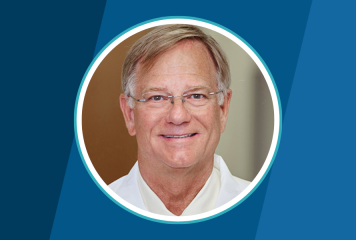David Pizzimenti, DO, is the Associate Medical Officer of Acute Care and founding Program Director of the Internal Medicine Residency at North Mississippi Medical Center in Tupelo, Mississippi—the largest rural hospital in the United States. Dr. Pizzimenti has served on the ABIM Internal Medicine Board since 2020, and recently spoke to ABIM about his work on residency programs and practicing in rural communities.
How did you get involved in starting Internal Medicine residency programs?
It’s been a circuitous journey to get to where I’ve been in terms of starting residency programs. I ended up in rural Mississippi through the National Health Service Corps, which is a federal program that brings doctors to underserved areas, basically because there’s such a shortage of doctors here. That led to an opportunity to start a residency program accredited by the American Osteopathic Association (AOA). Studies show that a significant percentage of doctors stay in areas where they train, and our mission was to train doctors and keep them in that area, and we were very successful in doing that and ensuring that they had board certification. By the time I left in 2018, we had a more than 97% first-time certifying board exam pass rate, both with ABIM and the AOA.
When AOA became a member organization of the Accreditation Council for Graduate Medical Education (ACGME) in the 2015-2020 transition to a single graduate medical education (GME) accreditation system, our program was the very first in the country to go through that transition in 2016, and became ACGME-accredited.
What was different about the Internal Medicine residency program you developed for North Mississippi Health Services at the start of the pandemic?
Starting another program during the pandemic was actually easier because I’d already gone through the process of accreditation before. I knew what I wanted and I could start from scratch. The plan now is to make a much bigger program at a much bigger hospital in hopes of creating a source of physicians that can serve this area in perpetuity.
What is unique about operating a residency program in a rural hospital?
There are challenges in terms of recruitment. A lot of students would rather stay in an urban area. You see a significant attrition of attending physicians in rural areas, so there are a lot of limitations. There are fewer resources in these areas and it’s tough to recruit faculty to rural areas.
But there are benefits too. The Centers for Medicare & Medicaid Services (CMS) funds graduate medical education, so any program that is not rurally designated has five years to start all of the GME programs they’re going to start with Indirect Medical Education (IME) and GME funding. Rurally designated hospitals can continually start programs, so that’s what we’re going to do. North Mississippi Health Services had a family medicine program, and now that we have Internal Medicine, there’s a 10-year plan to start programs in other specialties so we can continue to serve this area.
Another benefit is the patients in rural areas are very appreciative of the care they get. They’re happy to have residents who often stay to become their physicians, or go somewhere else to learn a specialty and then come back. It also creates economic opportunities for these communities from the doctors who live and work there, hire people, create jobs, buy homes and become a resource for their community. There’s great medicine in rural communities and great training opportunities for residents.
What are the greatest challenges facing rural health systems?
The big issue in rural areas is disparity. Mississippi, in addition to being the poorest state in the country, has the worst health outcomes in obesity, longevity and many other metrics, in part due to low health literacy. There are so many disparities here and associated health literacy and economic disparities that exist in urban areas but they exist here on another level. Those are the things that are hard to overcome and that’s what is important when we train our residents. It’s not just medical knowledge, it’s patient care, practice-based learning and system-based care; we bake that into the training so residents can navigate those challenges and provide the best possible care for their patients.



